The advent of newspapers and journalism in Iran sparked a wave of repression, threats, imprisonment and even murder.
From Mirza Jahangir-Khan Sur-e-Esrafil, the founder of the Sur-e-Esrafil newspaper in 1909, to Shahrzad Hemmati, the social desk editor of Shargh newspaper this week, journalists have faced many serious challenges.
Hostility toward journalism escalated since the 1979 Islamic Revolution, but one of the darkest periods for journalists kicked off with nationwide protests sparked by Mahsa Amini's death in police custody in September 2022.
Following the eruption of the Woman, Life, Freedom protests, over 90 journalists, reporters and photojournalists have been summoned or detained in Iran.
While some have been temporarily released on bail or had their legal cases dismissed, security institutions have continued to use judicial tools to suppress journalists.
Iran ranks 177th out of 180 countries in RSF's World Press Freedom Index.
Repressing journalists is not the sole approach employed by the Islamic Republic to hinder the free flow of information; newspapers are also targeted by security and judicial institutions.
"The possibility of writing about the Treaty of Golestan and Treaty of Turkmenchay is no longer possible in newspapers, let alone the coverage of Russia's current political affairs," said a journalist working with one of Iran's national newspapers, referring to the 1813 and 1828 agreements between Iran and the Russian Empire.
According to him, newspaper managers, driven by the fear of reprimands, increasingly restrict journalists in their work and limit their freedom.
Another journalist who was recently dismissed from a prominent news agency, told IranWire: "In my 15-year career, I never anticipated a day when agencies like ISNA and ILNA would only rely on advertisements."
Criticism was initially curtailed and then outright banned after the President Ebrahim Raisi assumed office, according to him.
"Subsequently, even reporting on the country's situation became forbidden. For months, news agencies have been limited to publishing statements coming from public relation offices, even regarding topics such as traffic in major cities," he added.
The journalist, who had been dismissed from his job for having insisted on publishing a report on air pollution, said he had noticed a return to the time when the state censored content before publication.
"It’s similar to the period that followed the August 19 coup, when agents in printing houses scrutinized newspaper content before publication," he said, referring to the army-led overthrow of the democratically elected Prime Minister Mohammad Mosaddegh in 1953.
According to the journalist, there are individuals in all media linked to government institutions who are meticulously monitoring every word published.
“Journalism Is No Longer Possible”
While the situation is somewhat better in independent newspapers, both Etemad, which published a highly confidential document of the Ministry of Interior, and Shargh, which conducted a survey on hijab, faced legal complaints from security, military or judicial institutions and were convicted.
The editor-in-chief of Hammihan newspaper also faced trial on charges of "creating discord between different sections of the people."
As media space tightens, the expulsion of journalists has intensified following the start of the Woman, Life, Freedom protest movement.
Mohammad Hossein Ajorlo, the husband of journalist Niloofar Hamedi, was sacked from his journalism position.
After 13 years of experience at IRNA, he disclosed early last year that the official news agency’s managers barred him from entering its premises and severed all collaboration with him.
Another journalist, Elnaz Mohammadi, the sister of Elahe Mohammadi, said in late 2023 that she was forced to resign from the Hammihan newspaper.
Marzieh Mahmoudi, the editor of the Tejarat News magazine, wrote on social media last year: "The pressures have escalated to the point where practicing journalism is no longer possible. At the end of this month, I will bid farewell to the media sector and the Tejarat News magazine."
Over the years, the monitoring and suppression of journalists have extended to social media.
Control over their post, which began years ago, intensified during the Woman, Life, Freedom protests.
IranWire has received information that in the weeks leading up to the first anniversary of Amini's death, several journalists were summoned to the prosecutor's office over their posts on Instagram and X.
One journalist, who requested anonymity for security reasons, said: "In the first weeks of September, I was summoned to the Culture and Media Prosecutor's Office. My lawyer and I discovered that the reason for the summons was the publication of a Persian poem."
Two other journalists confirmed in interviews with IranWire that they were summoned and even arrested for similar reasons.
"I reposted a tweet from the father of one of the victims of the crackdown on the 2022 protests, and I was arrested,” a reporter for a local publication explained. “Just a few days ago, I was sentenced to one year in prison for propaganda activities."
Despite the summonses, arrests and sentences faced by journalists in recent months, IranWire has verified that at least seven journalists were "fired" from various national and local media under pressure from security institutions.
One of these journalists said: "I can swear that the content on my social media was no different from my colleagues’, but due to arrests during my student days, I was fired in November from the weekly newspaper where I was working.
"I was called to the manager's office that day. The manager said I had to leave the magazine myself, or the IRGC's complaint could lead to the cancellation of the magazine's license and the unemployment of many people. I collected my things and left the office."
One method used by the Islamic Republic after suppressing protests over the 2009 presidential election was pressuring media managers to dismiss journalists.
Rather than closing media outlets or arresting their employees, security institutions removed journalists from their posts or hindered their ability to work.
The increased scrutiny of the journalists' online activities was confined to the Woman, Life, Freedom protests.
After the suspicious death of Armita Geravand in the Tehran subway, the Tehran Prosecutor's Office opened a case against at least two journalists: Milad Alavi from Sharg and Sara Masoumi, a reporter for the Rozarooz Telegram channel who was briefly arrested.
Masoumi received a six-month prison sentence and a fine of 15 million tomans ($300), and was banned from journalism for a period of two years.
Shahrzad Hemmati, the social desk editor of Shargh newspaper, faced a court case for publishing an Instagram story that opposed executions.
Media close to the government announced that Hemmati was accused of "supporting terrorists."
Moreover, among the citizens facing consequences for their insistence on the freedom to choose their clothing, journalists bear a significant share.
On January 15, the judiciary announced that Tehran's Public and Revolutionary Court had opened a new case against two journalists, Elahe Mohammadi and Niloofar Hamedi, for publishing pictures of themselves without the mandatory hijab after their temporary release from prison.
Elahe Ebrahimi, the news desk editor of Hammihan, said that plainclothes officers threatened her with a gun and seized her car because she "refrained from wearing the compulsory hijab."
According to IranWire's information, five journalists who refused to wear a headscarf after the eruption of the Woman, Life, Freedom protests have been fired from media affiliated with government institutions.
"Because my outlet is affiliated with a government institution, I used to show up at the office with a hijab, but one of my colleagues saw me without a headscarf in the subway. I was fired a few hours later," a woman reporter told IranWire.
Another woman reporter explained the reason for her dismissal from a weekly magazine: "During the first week of the protests, I went to the office without the compulsory hijab.
"I hadn't even sat down at my desk when the editor came and announced in a humiliating and insulting way that I was fired.”
Journalists who are privileged enough to have a job have another problem to deal with.
The monthly income of a journalist working for an "independent" newspaper falls within the range of 7 to 9 million tomans ($130-$170).
The average monthly salary of those employed in state media or outlets affiliated with institutions funded by the state budget reaches 11 million tomans ($210).
In an environment of soaring inflation, they are grappling with livelihood challenges to the extent that leading a normal life on their salaries has become a formidable task.
For many journalists, the only solution is to take on a second and third job, a journalist told IranWire: "Certain institutions, funded through public budgets, utilize journalists for tasks such as managing public relations, drafting special letters, etc.
“However, not all journalists are chosen and these institutions support journalists who align with their ideological stance.
"For instance, before the current administration, many of my colleagues collaborated with entities like welfare and others in research fields. After Ebrahim Raisi's government took office, these collaborations became highly limited and nearly ceased following the 2022 protests."
“Caught Between Security Threats and Economic Pressures"
Livelihood challenges coupled with security pressures have driven dozens of journalists out of the profession, including a group of female reporters who, not too long ago, reported on the country's social, political and economic issues.
Now, they find themselves compelled to abandon their work and rebuild their lives by exploring new ideas and ventures.
Azadeh Mohammad Hossein, a former reporter, told Etemad newspaper: "Neli Mahjoub crafts candles, Zahra Jafarzadeh offers skincare services, Elnaz Mohammadi is a fabric and clothing designer, and Mojgan Jamshidi sells natural fiber clothes.
"Marjan Laghaei makes snacks and dried fruits, Maryam Khorsand makes ceramic dishes, Shahrazad Hemmati sells sporty and comfortable clothes, while Nafiseh Zare-kohan and Azam Vismeh sell wedding clothes; they have ventured into designing and sewing clothes.
"Mahsa Amrabadi sells local food products, Zahra Jodi produces textile kitchen utensils, Gisoo Faghfouri sells clothes, ornaments and handicrafts with natural fibers, and Noshin Jafari is in the leather business."
However, not all reporters have been as fortunate as them.
A journalist told IranWire: "Before my arrest in 2022, I was working for a newspaper in a city. However, after my release, I couldn't find a job in any provincial publications.
"At 40 years old, journalism is all I know. Through a friend, I found a position in one of Tehran's publications, but I lacked money for rent there.
"I arrived in Tehran to work with just my clothes, a laptop and my car. For several months, I've been working at Snap (Iran's equivalent for Uber) before and after office hours, sleeping in my car outside the office for a few hours and then beginning a new day.
"All these economic pressures might have been bearable if security institutions let up on me. Not a day goes by without being warned of another summons or being jailed again.
"We, journalists, find ourselves caught between two formidable forces: security threats and economic pressures."
Journalists who were compelled to leave their homeland also face security threats.
Freedom House has disclosed documents illustrating the Islamic Republic's "cross-border harassment" of journalists, including physical attacks, arrests, kidnappings, illegal deportations, and severe restrictions on freedom of movement.
In a report titled "A Light That Cannot Be Extinguished,” the Washington-based non-governmental organization also revealed that journalists' family members face online harassment and defamation campaigns.
Iranian authorities also resort to arresting journalists’ family members.
In May last year, Sajjad Shahrabi, the brother of Shima Shahrabi, the editor of IranWire, was arrested due to her media activities.
According to Reporters Without Borders families of prisoners of conscience and journalists face pressure from the security-judicial authorities of the Islamic Republic.
In October 2019, Masih Alinejad announced that the government had taken his brother, Ali Alinejad, “hostage" with the intention of "forcing her to remain silent."
Farangis Mazloum, the mother of Soheil Arabi, and Shehrzad Jafari, the sister of Noushin Jafari, were also arrested.
Over the 44 years since the revolution, the security and judicial apparatuses of the Islamic Republic have consistently impeded the free flow of information through censorship and mass arrests of journalists in an attempt to control public opinion with their distorted narratives.
Such tactics have been accompanied by an increase in public dissatisfaction.
Nevertheless, with the growing influence of social media and increased credibility of Persian-language media outside of Iran, these efforts are expected to yield diminishing results over time.
visit the accountability section
In this section of Iran Wire, you can contact the officials and launch your campaign for various problems












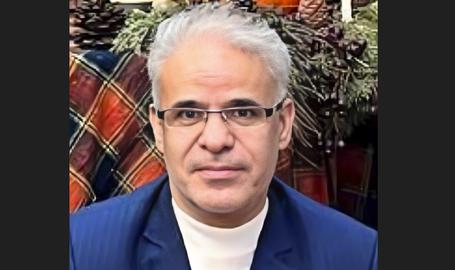
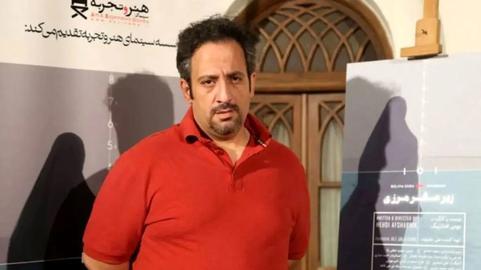

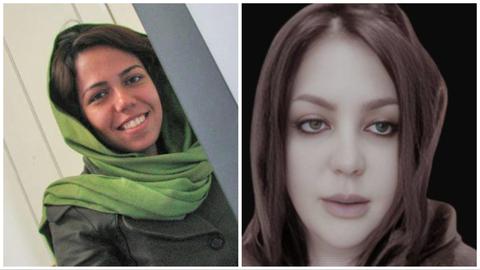
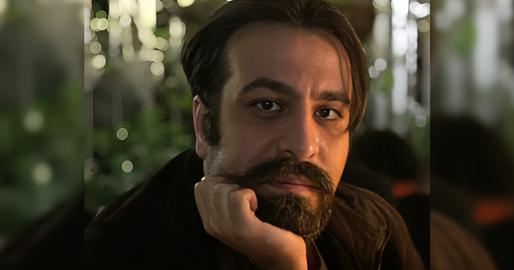


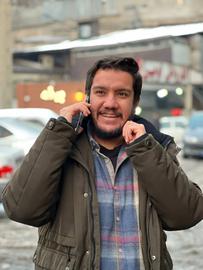
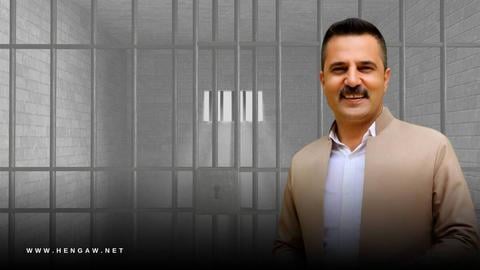
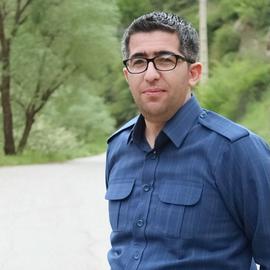


comments